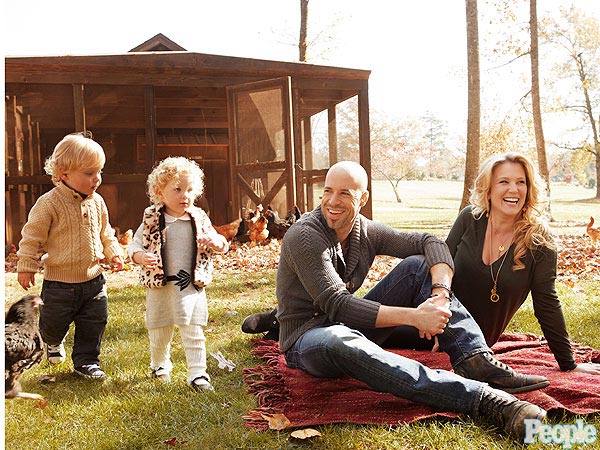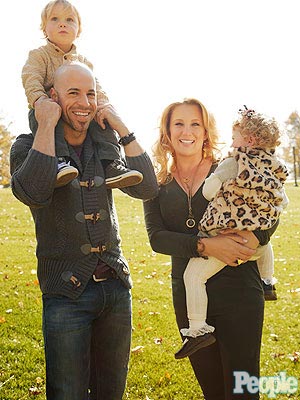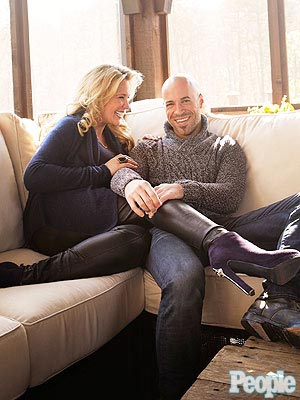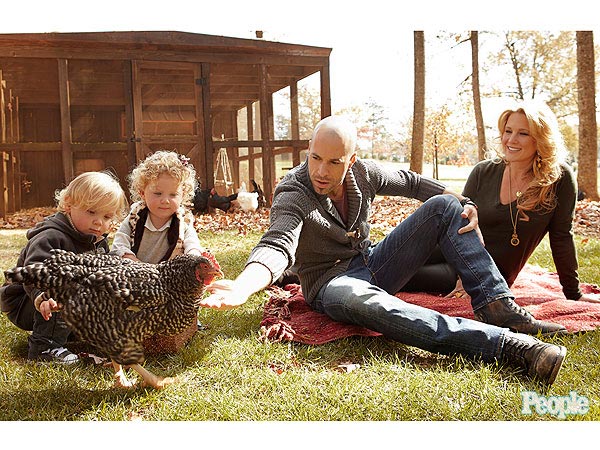LAS VEGAS (AP) — From the iPotty for toddlers to the 1,600-pound mechanical spider and the host of glitch-ridden “smart” TVs, the International CES show is a forum for gadget makers to take big — and bizarre — chances.
Many of the prototypes introduced at the annual gadget show over the years have failed in the marketplace. But the innovators who shop their wares here are fearless when it comes to pitching new gizmos, many of which are designed to solve problems you didn’t know you had.
A search for this year’s strangest (and perhaps least useful) electronic devices yielded an extra-loud pair of headphones from a metal band, an eye-sensing TV that didn’t work as intended and more. Take a look:
—MOTORHEADPHONES
Bass-heavy headphones that borrow the names of hip-hop luminaries like Dr. Dre have become extremely popular. Rock fans have been left out of the party — until now. British metal band Motorhead, famous for playing gut-punchingly loud, is endorsing a line of headphones that “go to eleven” and are hitting U.S. stores now.
Says lead singer and bassist Lemmy Kilmister, explaining his creative input: “I just said make them louder than everybody else’s. So that’s the only criteria, and that it should reflect every part of the sound, not just the bass.”
The Motorheadphone line consists of three over-the-ear headphones and six in-ear models. The initiative came from a Swedish music-industry veteran, and distribution and marketing is handled by a Swedish company, Krusell International AB.
WHO IT’S FOR: People who don’t care about their hearing. According to Kilmister, the headphones are ideal for Motorhead fans. “Their hearing is already damaged, they better buy these.”
PRICE: Prices range from $ 50 to $ 130.
—EYE-SENSING TV
A prototype of an eye-sensing TV from Haier didn’t quite meet viewers eye-to-eye. An on-screen cursor is supposed to appear where the viewer looks to help, say, select a show to watch. Blinking while controlling the cursor is supposed to result in a click. In our brief time with the TV, we observed may quirks and comic difficulties.
For one, the company’s demonstrator Hongzhao Guo said the system doesn’t work that well when viewers wear eyeglasses. (That kind of defeats the purpose of TV, no?) But it turns out, one bespectacled reporter was able to make it work. But the cursor appeared a couple inches below where the viewer was looking. This resulted in Guo snapping his fingers to attract the reporter’s eye to certain spots. The reporter dutifully looked, but the cursor was always a bit low. Looking down to see the cursor only resulted in it moving further down the TV screen.
WHO IT’S FOR: People too lazy to move their arms.
“It’s easy to do,” Guo said, taking the reporter’s place at the demonstration. He later said the device needs to be recalibrated for each person. It worked fine for him, but the TV is definitely not ready for prime-time.
—PARROT FLOWER POWER
A company named after a bird wants to make life easier for your plants. A plant sensor called Flower Power from Paris-based Parrot is designed to update your mobile device with a wealth of information about the health of your plant and the environment it lives in. Just stick the y-shaped sensor in your plant’s soil, download the accompanying app and — hopefully — watch your plant thrive.
“It basically is a Bluetooth smart low-energy sensor. It senses light, sunlight, temperature, moisture and soil as well as fertilizer in the soil. You can use it either indoors or outdoors,” said Peter George, vice president of sales and marketing for the Americas at Parrot. The device will be available sometime this year, the company said.
WHOT IT’S FOR: ‘Brown-thumbed’ folk and plants with a will to live.
PRICE: Unknown.
—HAPIFORK
If you don’t watch what you put in your mouth, this fork will — or at least try to. Called HAPIfork, it’s a fork with a fat handle containing electronics and a battery. A motion sensor knows when you are lifting the fork to your mouth. If you’re eating too fast, the fork will vibrate as a warning. The company behind it, HapiLabs, believes that using the fork 60 to 75 times during meals that last 20 to 30 minutes is ideal.
But the fork won’t know how healthy or how big each bite you take will be, so shoveling a plate of arugula will likely be judged as less healthy than slowly putting away a pile of bacon. No word on spoons, yet, or chopsticks.
WHO IT’S FOR? People who eat too fast. Those who want company for their “smart” refrigerator and other kitchen gadgets.
PRICE: HapiLabs is launching a fundraising campaign for the fork in March on the group-fundraising site Kickstarter.com. Participants need to pay $ 99 to get a fork, which is expected to ship around April or May.
— IPOTTY
Toilet training a toddler is no picnic, but iPotty from CTA Digital seeks to make it a little easier by letting parents attach an iPad to it. This way, junior can gape and paw at the iPad while taking care of business in the old-fashioned part of the plastic potty. IPotty will go on sale in March, first on Amazon.com.
There are potty training apps out there that’ll reward toddlers for accomplishing the deed. The company is also examining whether the potty’s attachment can be adapted for other types of tablets, beyond the iPad.
“It’s novel to a lot of people but we’ve gotten great feedback from parents who think it’d be great for training,” said CTA product specialist Camilo Gallardo.
WHO IT’S FOR: Parents at their wit’s end.
PRICE: $ 39.99
—MONDO SPIDER, TITANOBOA
A pair of giant hydraulic and lithium polymer battery controlled beasts from Canadian art organization eatART caught some eyes at the show. A rideable 8-legged creature, Mondo Spider weighs 1,600 pounds and can crawl forward at about 5 miles per hour on battery power for roughly an hour. The 1,200-pound Titanoboa slithers along the ground at an as yet unmeasured speed.
Computer maker Lenovo sponsored the group to show off the inventions at CES.
Hugh Patterson, an engineer who volunteers his time to making the gizmos, said they were made in part to learn more about energy use. One lesson from the snake is that “side winding,” in which the snake corkscrews its way along the ground, is one of the most efficient ways of moving along soft ground, like sand.
Titanoboa was made to match the size of a 50-foot long reptile whose fossilized remains were dated 50 million years ago, when the world was 5 to 6 degrees warmer. The creature was built “to provoke discussion about climate change,” Patterson said.
The original version of Mondo Spider, meanwhile, first appeared at the Burning Man arts gathering in Nevada in 2006.
WHO IT’S FOR: Your inner child, Burning Man participants, people with extra-large living rooms.
PRICE: The spider’s parts cost $ 26,000. The Titanoboa costs $ 70,000. Engineers provided their time for free and both took “thousands of hours” to build, Patterson said.
___
Ortutay contributed from New York. AP Technology Writer Peter Svensson and Luke Sheridan from AP Television contributed to this story from Las Vegas.
Gadgets News Headlines – Yahoo! News
Title Post: ‘Smart’ potty or dumb idea? Wacky gadgets at CES
Url Post: http://www.news.fluser.com/smart-potty-or-dumb-idea-wacky-gadgets-at-ces/
Link To Post : ‘Smart’ potty or dumb idea? Wacky gadgets at CES
Rating:
100%
based on 99998 ratings.
5 user reviews.
Author: Fluser SeoLink
Thanks for visiting the blog, If any criticism and suggestions please leave a comment














